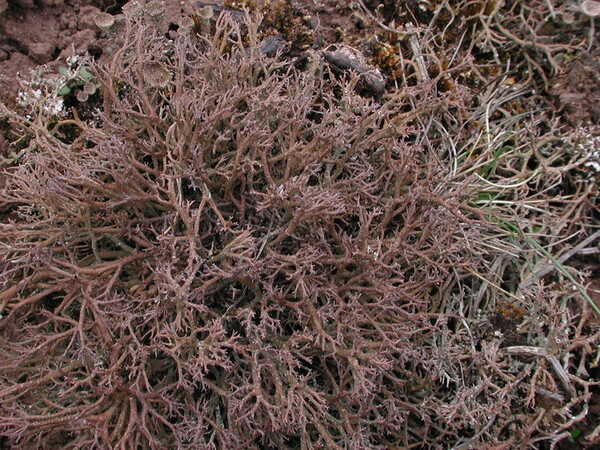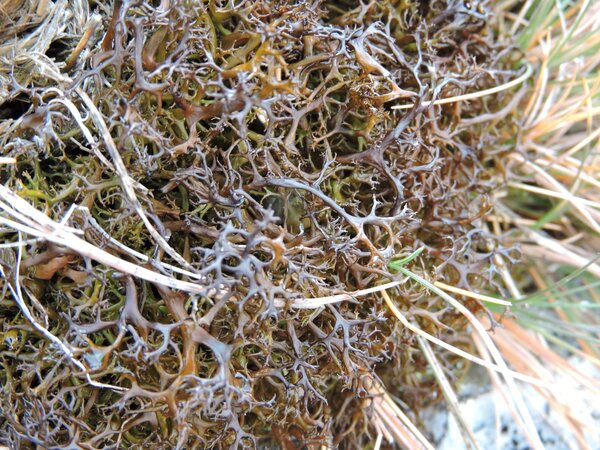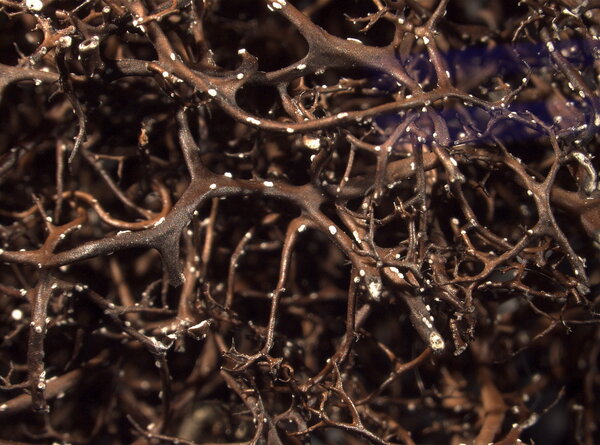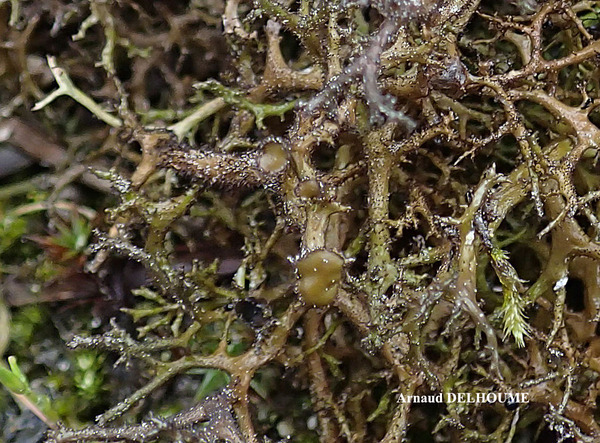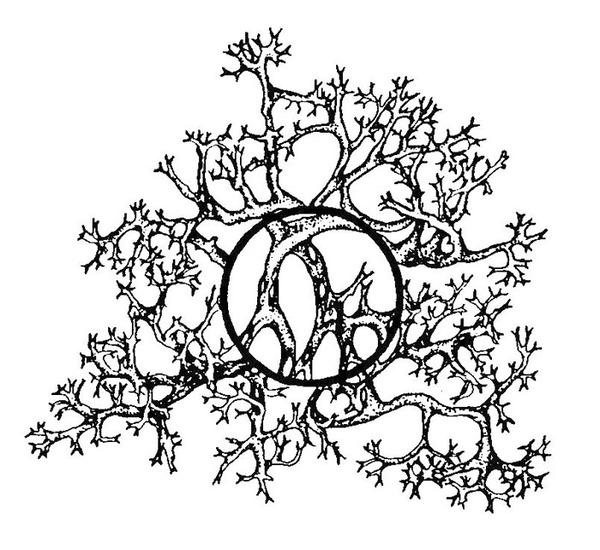Cetraria aculeata (Schreb.) Fr.
Syst. Orb. Veget.: 239, 1825. Basionym: Lichen aculeatus Schreb. - Spicil. Fl. Lips.: 125, 1771.
Synonyms: Cetraria aculeata var. campestris Schaer.; Cetraria aculeata var. edentula (Ach.) Nyl.; Cetraria aculeata var. sorediata Du Rietz; Cetraria aculeata var. spadicea (Roth) Ach. ex Mong.; Cetraria bohemica Anders; Cetraria tenuissima (L.) Vain.; Cetraria tenuissima var. campestris (Schaer.) Erichsen; Coelocaulon aculeatum (Schreb.) Link; Coelocaulon bohemicum (Anders) Clauzade & Cl. Roux; Cornicularia aculeata (Schreb.) Ach.; Cornicularia aculeata var. acanthella (Ach.) Ach.; Cornicularia aculeata var. campestris (Schaer.) Rabenh.; Cornicularia aculeata var. coelocaula Flot.; Cornicularia bohemica (Anders) Anders; Cornicularia spadicea (Roth) Ach.; Cornicularia tenuissima (L.) Zahlbr.
Description: Thallus fruticose, loosely attached, coarsely dichotomously branched, forming irregular, shrubby tufts, matt to glossy, brown or almost black, the basal parts often reddish, very stiff and brittle. Branches terete, or the largest ones more or less flattened, spinulose, not dorsiventral, 0.5-2(-3) mm thick, up to 6(-8) cm tall (usually less), with an uneven surface and scanty, maculiform, concave, elongate, white pseudocyphellae usually occurring in pits on the main branches. Cortex three-layered, with a denser, brown outer layer with accumulation of dead cells, an intermediate layer with hyphae more or less sparsely distributed in a gelatinous matrix, and a colourless inner layer with more conglutinated cells; medulla white, lax and web-like to hollow in basal parts. Apothecia rare (not seen in Italian material), lecanorine, sessile, mostly subterminal, with a brown disc. Epithecium brown; hymenium colourless, 35-50 μm high, I+ blue; paraphyses coherent, the apical cells slightly swollen; hypothecium colourless, underlain by a dense algal layer. Asci (6-)8-spored, narrowly clavate, with a small axial body and a distinct, K/I+ blue ring-structure in the rather large tholus, approaching the Lecanora-type. Ascospores 1-celled, hyaline, ellipsoid, 5.5-6.5 x 2.5-3.5 μm. Pycnidia dark, immersed in short marginal projections. Conidia fusiform c. 5 x 1 μm. Photobiont chlorococcoid. Spot tests: cortex and medulla K-, C-, KC-, P-, UV-. Chemistry: lichesterinic and protolichesterinic acids.
Growth form: Fruticose
Substrata: soil, terricolous mosses, and plant debris
Photobiont: green algae other than Trentepohlia
Reproductive strategy: mainly sexual
Commonnes-rarity: (info)
Alpine belt: absent
Subalpine belt: rather rare
Montane belt: very rare
Dry submediterranean belt: extremely rare
Humid submediterranean belt: very rare
Padanian area: extremely rare
pH of the substrata:
1 2 3 4 5
Solar irradiation:
1 2 3 4 5
Aridity:
1 2 3 4 5
Eutrophication:
1 2 3 4 5
Poleotolerance:
0 1 2 3
Altitudinal distribution:
1 2 3 4 5 6
Rarity
absent
extremely rare
very rare
rare
rather rare
rather common
common
very common
extremely common
Loading data...
Occurrence data
Predictive map

Felix Schumm – CC BY-SA 4.0
[18979], Australia, Victoria, Basalt Hill, Alpine National Park, Bogong High Plains, 20 km SE of Mt. Beauty, 36°53' S, 147°18 E, 1650 m, on soil and debris in exposed alpine grasslands with basalt outcrops and southerly aspect. Leg. J.A. Elix (40374) & H. Streimann 17.02.1994. LICH. AUSTRALASICI EXS. 278
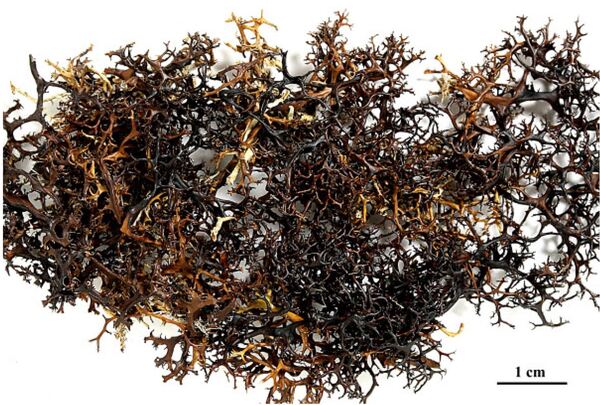
Felix Schumm – CC BY-SA 4.0
[18979], Australia, Victoria, Basalt Hill, Alpine National Park, Bogong High Plains, 20 km SE of Mt. Beauty, 36°53' S, 147°18 E, 1650 m, on soil and debris in exposed alpine grasslands with basalt outcrops and southerly aspect. Leg. J.A. Elix (40374) & H. Streimann 17.02.1994. LICH. AUSTRALASICI EXS. 278

Felix Schumm – CC BY-SA 4.0
[18979], Australia, Victoria, Basalt Hill, Alpine National Park, Bogong High Plains, 20 km SE of Mt. Beauty, 36°53' S, 147°18 E, 1650 m, on soil and debris in exposed alpine grasslands with basalt outcrops and southerly aspect. Leg. J.A. Elix (40374) & H. Streimann 17.02.1994. LICH. AUSTRALASICI EXS. 278
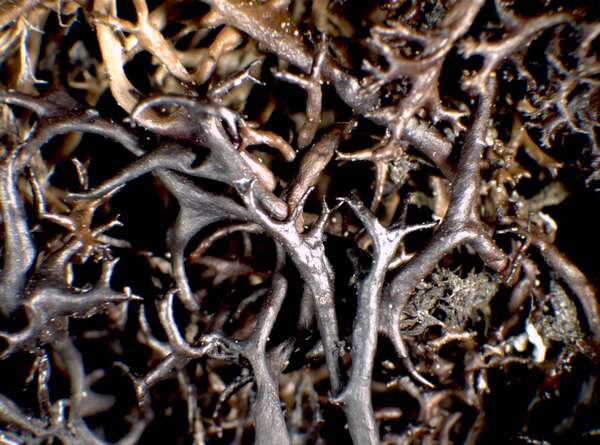
P.L. Nimis; Owner: Department of Life Sciences, University of Trieste
Herbarium: TSB (21023)
2001/12/07
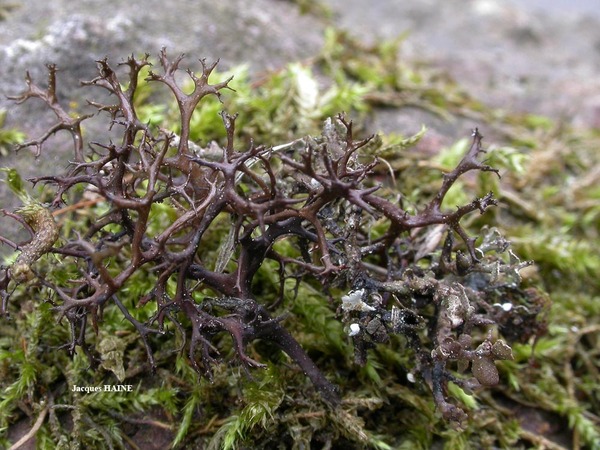
Jacques Haine - Source: http://www.lichensmaritimes.org/index.php?task=fiche&lichen=199&lang=en
France, Laon

Antonio Valerio Risoto - Source: http://www.lichensmaritimes.org/index.php?task=fiche&lichen=199&lang=en
Spain, Avila
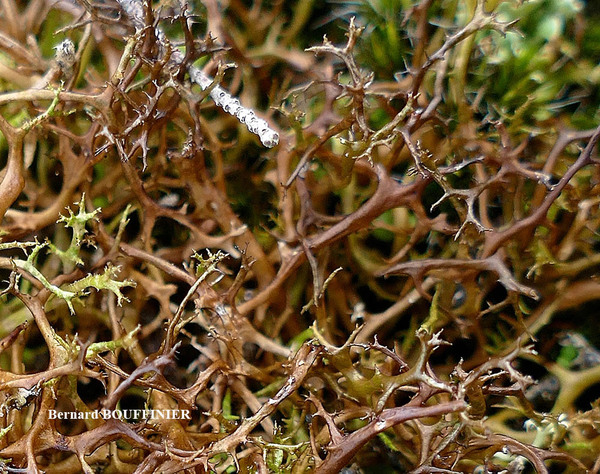
Bernard Bouffinier - Source: http://www.lichensmaritimes.org/index.php?task=fiche&lichen=199&lang=en
France, Quelern
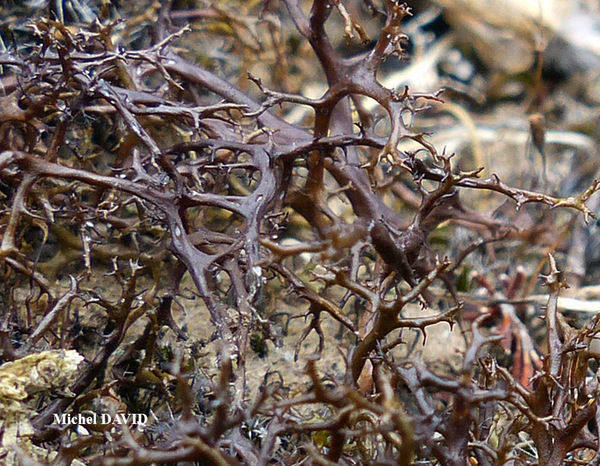
Michel David - Source: http://www.lichensmaritimes.org/index.php?task=fiche&lichen=199&lang=en
France, Camaret
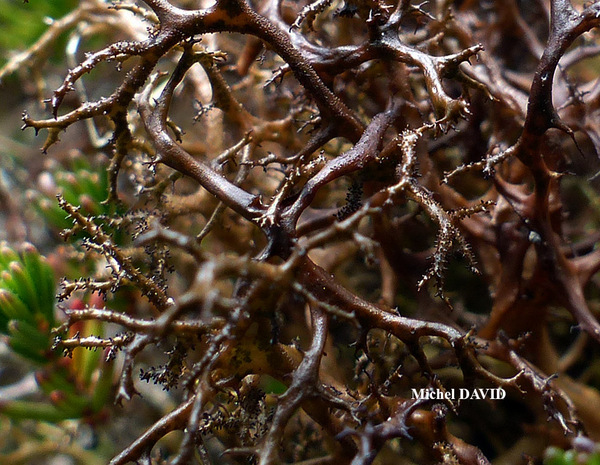
Michel David - Source: http://www.lichensmaritimes.org/index.php?task=fiche&lichen=199&lang=en
France, Camaret
Growth form: Fruticose
Substrata: soil, terricolous mosses, and plant debris
Photobiont: green algae other than Trentepohlia
Reproductive strategy: mainly sexual
Commonnes-rarity: (info)
Alpine belt: absent
Subalpine belt: rather rare
Montane belt: very rare
Dry submediterranean belt: extremely rare
Humid submediterranean belt: very rare
Padanian area: extremely rare
pH of the substrata:
| 1 | 2 | 3 | 4 | 5 |
Solar irradiation:
| 1 | 2 | 3 | 4 | 5 |
Aridity:
| 1 | 2 | 3 | 4 | 5 |
Eutrophication:
| 1 | 2 | 3 | 4 | 5 |
Poleotolerance:
| 0 | 1 | 2 | 3 |
Altitudinal distribution:
| 1 | 2 | 3 | 4 | 5 | 6 |
Rarity
absent
extremely rare
very rare
rare
rather rare
rather common
common
very common
extremely common
Loading data...
Occurrence data
Predictive map

Felix Schumm – CC BY-SA 4.0
[18979], Australia, Victoria, Basalt Hill, Alpine National Park, Bogong High Plains, 20 km SE of Mt. Beauty, 36°53' S, 147°18 E, 1650 m, on soil and debris in exposed alpine grasslands with basalt outcrops and southerly aspect. Leg. J.A. Elix (40374) & H. Streimann 17.02.1994. LICH. AUSTRALASICI EXS. 278

Felix Schumm – CC BY-SA 4.0
[18979], Australia, Victoria, Basalt Hill, Alpine National Park, Bogong High Plains, 20 km SE of Mt. Beauty, 36°53' S, 147°18 E, 1650 m, on soil and debris in exposed alpine grasslands with basalt outcrops and southerly aspect. Leg. J.A. Elix (40374) & H. Streimann 17.02.1994. LICH. AUSTRALASICI EXS. 278

Felix Schumm – CC BY-SA 4.0
[18979], Australia, Victoria, Basalt Hill, Alpine National Park, Bogong High Plains, 20 km SE of Mt. Beauty, 36°53' S, 147°18 E, 1650 m, on soil and debris in exposed alpine grasslands with basalt outcrops and southerly aspect. Leg. J.A. Elix (40374) & H. Streimann 17.02.1994. LICH. AUSTRALASICI EXS. 278

P.L. Nimis; Owner: Department of Life Sciences, University of Trieste
Herbarium: TSB (21023)
2001/12/07

Jacques Haine - Source: http://www.lichensmaritimes.org/index.php?task=fiche&lichen=199&lang=en
France, Laon

Antonio Valerio Risoto - Source: http://www.lichensmaritimes.org/index.php?task=fiche&lichen=199&lang=en
Spain, Avila

Bernard Bouffinier - Source: http://www.lichensmaritimes.org/index.php?task=fiche&lichen=199&lang=en
France, Quelern

Michel David - Source: http://www.lichensmaritimes.org/index.php?task=fiche&lichen=199&lang=en
France, Camaret



